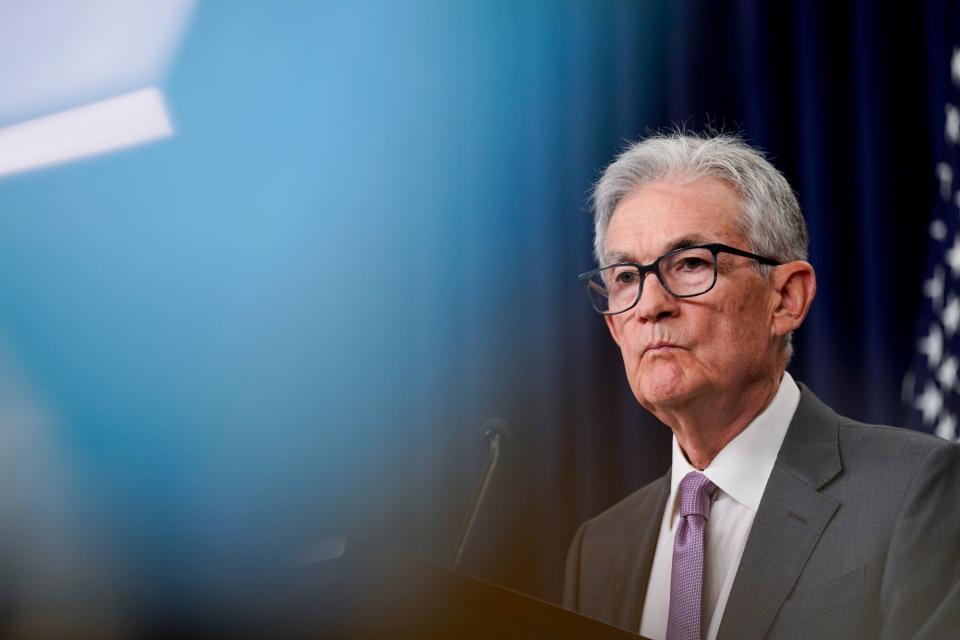Newest Jobs Data Fail to Resolve Fed Debate Over September Cut
(Bloomberg) -- The latest snapshot of the US labor market left open the possibility the Federal Reserve will go big as it begins cutting interest rates, though two key officials on Friday stopped short of endorsing such a move at their meeting this month.
Most Read from Bloomberg
World's Second Tallest Tower Spurs Debate About Who Needs It
The Plan for the World’s Most Ambitious Skyscraper Renovation
UC Berkeley Gives Transfer Students a Purpose-Built Home on Campus
Figures released Friday showed employers created fewer jobs than expected in August, adding to a steady stream of recent signs the labor landscape is cooling.
New York Fed President John Williams and Fed Governor Christopher Waller, speaking at separate events after the data was released, acknowledged a moderation in the labor market. Despite that, Waller said he doesn’t believe the economy is in or headed for recession, while Williams said conditions now are more “consistent with the good labor market” before the Covid-19 pandemic.
But Waller made clear he stands ready to support the labor market, echoing remarks last month from Fed Chair Jerome Powell, and said he would advocate for a bigger move “if subsequent data show a significant deterioration in the labor market.”
Traders are pricing in at least a quarter-point worth of easing this month, though some are still betting on a bigger move when officials gather in Washington Sept. 17-18.
“Did this jobs number rise to the threshold to warrant a 50-basis-point rate cut? Based upon past Fed reasoning, no,” said Kevin Flanagan, head of fixed income strategy at WisdomTree. “But could you make a case for 50, especially with the downward revisions to the prior two months in payrolls? That’s a fair point as well.”
That could set up a vigorous debate among policymakers — not to mention Wall Street economists and investors in the $27 trillion Treasury market — over the pace and size of cuts needed over the coming months as the US central bank heads into its most hotly anticipated meeting in more than a year.
The key question for Powell and his colleagues is whether the labor market’s slowdown is likely to turn into a meaningful downturn – an outcome they are urgently seeking to avoid.
Employers in August added 142,000 net new positions, short of the consensus 165,000 expected by economists. Job gains reported in June and July were also revised down. Hiring over the past three months averaged 116,000 per month, the weakest pace since the middle of 2020 during the depths of the pandemic.
“The current batch of data no longer requires patience, it requires action,” Waller said, adding that he is “open-minded about the size and pace of cuts.”
Following the release of Friday’s labor-market data, bond traders initially increased to 50% the odds they gave to a 50-basis-point cut in September, only to quickly pull that scenario back to about one-in-five.
The choppy trading around policy easing odds this month still leaves Treasury yields well below the current policy band of 5.25% - 5.5%, with the two-year yield around 3.65%, illustrating how confident bond traders remain that officials will deliver rate cuts to the tune of about 2.4 percentage points by September 2025.
Some economists pointed to details in Friday’s jobs report, such as a move lower in the unemployment rate and an uptick in wage growth, as signs the labor market is still on solid footing overall.
The Fed is “not panicking and they think the economy is still in decent shape,” said Gus Faucher, chief economist at PNC Financial Services Group, who expects a quarter-point cut this month. “A bigger cut might indicate that they’re more worried about the economy and be taken as a negative. That could actually work against what they’re trying to accomplish.”
Minutes of the Fed’s July gathering, which took place before disappointing July employment data was released, showed “several” officials already saw a good case for cutting rates then.
Powell then followed that jobs report, which deeply unsettled investors, with a closely watched speech in which he declared that he and his colleagues would neither seek nor welcome further cooling in labor market conditions.
Some commentators cited those remarks today, asking whether the August report released earlier Friday constituted the kind of cooling Powell is so keen to avoid.
“I think there’s a strong argument for a half percent. I think it’s going to be hotly debated,” said Diane Swonk, chief economist at KPMG. “Whether they get there or not is really going to depend on how many on the board are willing to go.”
Along with making a decision on where to set rates, officials at their upcoming meeting will also release a fresh set of forecasts for economic conditions, as well as their projections for the appropriate path for interest rates in the coming quarters. That will provide a clearer picture of how quickly officials would like to lower rates.
Williams, of the New York Fed, said Friday that officials can move policy toward neutral — a stance intended to neither promote or restrict economic activity — “over time depending on the evolution of the data, the outlook and the risks to achieving our objectives.”
Most Read from Bloomberg Businessweek
‘They Have Stolen Our Business’: When You Leave Russia, Putin Sets the Terms
The Average American Eats 42 Pounds of Cheese a Year, and That Number Could Go Up
How Local Governments Got Hooked on One Company’s Janky Software
Howard Lutnick Emerges as Trump’s No. 1 Salesman on Wall Street
©2024 Bloomberg L.P.

 Yahoo Finance
Yahoo Finance 









